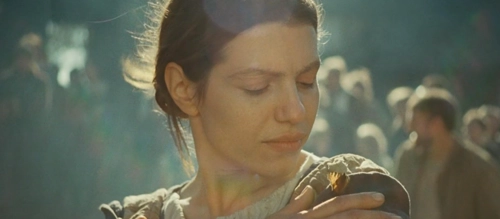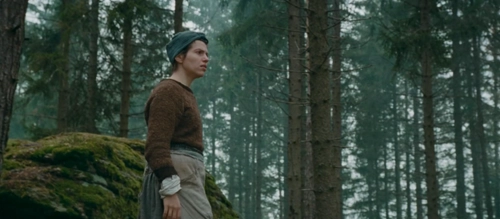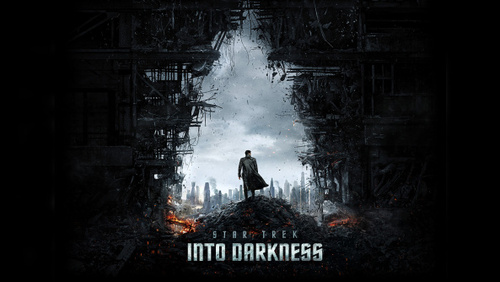
The Devil’s Bath (2024)
Directors: Severin Fiala, Veronika Franz
Screenwriters: Severin Fiala, Veronika Franz
Starring: Anja Plaschg, Maria Hofstätter, David Scheid
Can immense sorrow truly drive someone to violence?
Society’s historical ignorance towards women’s mental health issues is dynamically explored in The Devil’s Bath, a folk-horror film by the Austrian directors Veronika Franz and Severin Fiala.
Franz and Fiala are not new to depicting psychological trauma women often experience; it is a prominent theme in their previous films Goodnight Mommy (2022) and The Lodge (2019). The tagline, “a mother should look out for her sons,” encapsulates Goodnight Mommy’s chilling commentary on the burdens of motherhood and the weight of guilt. Both Goodnight Mommy and The Lodge follow a similar general plot of a mother-figure being alone with two children in an isolated location. The Lodge, however, leans more into traditional religious horror tropes and acts as a reflection on the consequences of extremism. Franz and Fiala continue in the vein of religion with The Devil’s Bath, but somewhat veer from their previous works by focusing on the turmoil in a lack of motherhood.
Set in 1700s Austria, The Devil’s Bath follows a recently married young woman, Agnes, as she tries to assimilate into her husband’s community and the role of a wife. The film begins with an unnamed woman taking unsettling action towards a baby at the tip of a waterfall. Soon after, the woman approaches a gothic building and confesses to committing a crime. The Devil’s Bath’s bleak opening foreshadows the psychological extremes Agnes will experience.
The initial grim atmosphere is almost immediately juxtaposed by the joyous celebrations of Agnes’s wedding to husband Wolf. On their wedding night, the couple do not consummate; Agnes starts becoming concerned about her ability to bear a child. While wandering around the woods, she finds the decapitated and mutilated corpse of the woman from the opening of the film. Agnes returns to visit the woman’s body on several occasions as Wolf’s mother increases criticism on Agnes’ inadequate execution of her responsibilities as a wife. As time passes, Agnes’ mental condition continues to decline. Her melancholy is only exacerbated by Wolf’s sexual neglect and the lack of friendship in the community. Agnes does grow closer to a young pregnant woman, but Wolf’s mother disapproves of the relationship. Tension in the religious community heightens with the death of one of Wolf’s friends. In a sermon, the priest explains that the man cannot be buried because he committed suicide, which he describes as a sin worse than murder.

The demonization of mental health issues and immense shame surrounding suicide are the main sources of conflict throughout the The Devil’s Bath. In humoral theory, “the devil’s bath” is a term used to refer to an immense period of melancholy due to an imbalance of the other three bodily humors (fiery choler, airy blood, watery phlegm). As Agnes’ depression becomes worse, she grows despondent and abandons her chores. At one point, she is sent to the barber, a makeshift doctor, to balance her temperament. The barber weaves a piece of horse hair into the back of her neck and instructs Agnes to tug it back and forth to let the poison leak out – a moment of truly visceral imagery.
The dense, swampy landscape and gloomy aesthetic of The Devil’s Bath serve well to enhance the film’s narrative tension, comparable to the cinematography of Robert Eggers’ The Witch. Nature at the beginning of the film seems friendly, as we see Agnes joyfully weaving flowers into her wedding headpiece and playing with an insect. The forest appears more sinister, however, as Agnes becomes emotionally detached. Her meandering through the dark tree trunks feels unnerving rather than comforting. The land physically consumes the characters at various points in the film. The body of the man who committed suicide is left to rot in a field, decaying amongst tall grass and flowers. When Agnes tries to get a head start on the day’s fishing work, the mud in the water grasps at her legs and makes it nearly impossible for her to move. In a way, the landscape parallels Agnes’ mounting hysteria.
The violent extremes that Agnes is ultimately led to reflect the historical prominence of suicide by proxy, especially among women. With no proper guidance, young women so often became trapped by marriage and the structures of religion. The standout aspect of the film is arguably Anja Plaschg’s performance as Agnes. She fantastically portrays the emotional nuances of Agnes’ arc from innocence to complete despair and apathy. Plaschg captures the consuming nature of depression in a way that is similar to Kirsten Dunst’s memorable performance as Justine in Lars von Trier’s Melancholia. Both Agnes and Justine experience catatonic episodes when the weight of their mental illness becomes too hard to bear. Justine’s struggles are also somewhat spurred by an unsatisfactory marriage and familial expectations. Melancholia and The Devil’s Bath construct parallel worlds of inescapable hopelessness, damaged by the cruel nature of humanity.
Though based on an accumulation of women’s lived experiences in the 18th century, The Devil’s Bath sheds light on issues that continue to plague religious communities today. Not to say the need for suicide by proxy is still a widely relevant phenomena, of course. The film does comment upon the internalized misogyny women can project onto each other in the name of religion. Across social media platforms, it is still fairly common to see women giving unsolicited critiques of other women’s appearances and behavior for not being “pious” or “modest” enough. The resurgence of the housewife aesthetic is also fundamentally rooted in religious traditions. As The Devil’s Bath demonstrates, it is obviously dangerous to equate a woman’s value to being a “good” wife and/or mother. The film also touches upon homophobia in religious communities.
The chaotic and gorey finale of The Devil’s Bath hammers in the themes that were simmering under the minimalist imagery and slow pace. The scenes of violence at the beginning and end of the film act as very effective brackets to the narrative. Though less of a typical horror movie and more of a psychological study, The Devil’s Bath is a beautifully haunting consideration of history and warning for the future.
Score: 19/24
Written by Lauren Frison
You can support Lauren Frison in the following places:
X (Twitter): @paranoidzpark
Letterboxd: /suspiriaz

